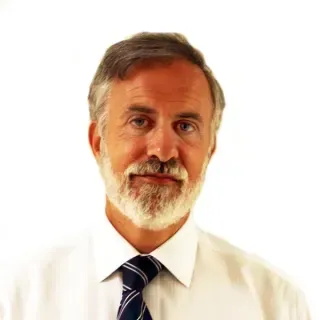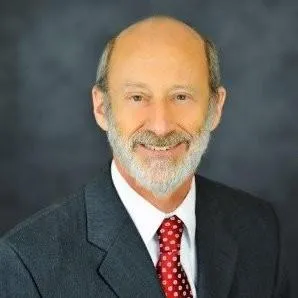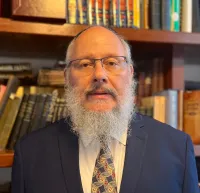Awaken to a Life of Spiritual Richness and Meaning
Discover the Transformative Power of Ancient Wisdom in Today's Modern World.
Discover your Path to Spiritual Growth
Embark on a transformative journey with Rabbi Ezagui.
“Seven Secrets” E-book
Uncover the profound wisdom and insights to guide you towards a deeper understanding of yourself and the world around you.
Inner Power Circle
Join a transformative program combining ancient wisdom, cutting-edge science & a vibrant community to help you unlock your highest potential.
Inner Power Circle
Join a transformative program combining ancient wisdom, cutting-edge science & a vibrant community to help you unlock your highest potential.
Redefine Your Reality: The Joy Perspective
In free video, you will gain the tools & insights needed to combat the pressures affecting your peace of mind. Delve into psychology and explore the meanings we attach to our life experiences.
About Rabbi Shlomo Ezagui

Your Spiritual Leader
With over 36 years in the rabbinate, Rabbi Shlomo Ezagui combines profound insights from Jewish Law and spirituality with personal experiences to guide individuals towards joy and fulfillment. His mission is powered by a deeply-held belief in everyone's potential to embrace a more joyful life.
Rabbi Ezagui is more than a spiritual leader. He's a mentor and guide who comprehends life's challenges and aims to help you overcome them
Read Our Latest Blogs

SpaceTime’ and Holidays
Kislev is a special month for redemption, miracles, happiness, and light. We are now in an exceptional, uplifted time on the Chassidic calendar. The 19th/20th of Kislev (Dec. 2/3) is the Rosh Hashanah (start of a brand new cycle) for Chassidus. What does this mean to us personally as we live and breathe through these days? How does one practically take hold of this concept?
Albert Einstein’s theory of General Relativity revolutionized our understanding of the fundamental nature of space and time. One of the key concepts introduced by Einstein is the idea of “Spacetime”, a unified framework that combines the three dimensions of space with the fourth dimension of time. This concept is crucial for describing the universe’s geometry on a large scale (and micro quantum scales) and how objects, especially massive ones like planets and stars, influence the space around them.
Here are some key points to help you understand the concept of spacetime:
Four (corresponding to the four letters of G-ds name) Dimensions:
Traditional physics had treated space and time as separate entities. However, Einstein proposed that these two aspects are interconnected and should be considered together.
Spacetime is a four-dimensional continuum, where three dimensions correspond to space (length, width, and height), and the fourth dimension is time.
The curvature of Spacetime:
According to General Relativity, massive objects, like planets and stars, curve the fabric of spacetime around them. This curvature is what we perceive as gravity.
The more massive an object, the greater its influence on the curvature of spacetime. Objects then move along the curved paths dictated by this curvature.
Gravity as a Geometric Phenomenon:
In the framework of General Relativity, gravity is not a force between masses, as described by Newtonian physics. Instead, mass and energy (practically the traditional idea of gravity and adding an expanded way of viewing gravity) have caused a curvature in spacetime geometry.
Space and Time Dynamics:
Changes in the distribution of mass and energy in spacetime result in the curvature of spacetime itself evolving over time.
Events in the universe are not just located in space; they also occur at specific points in time. Spacetime allows us to consider events as happening at a particular point in both space and time. (very relevant to for example the observance of a Holiday in Israel versus the rest of the world.)
Time Dilation:
The interconnected nature of spacetime leads to phenomena like time dilation. Time can pass at different rates for observers in different gravitational fields or moving at different speeds relative to each other. (this explains how Kefitzat Haderech – the stories in the Bible and of our great sages, circumventing the regular measures in space and time.)
Cosmological Implications:
Spacetime plays a crucial role in understanding the universe’s large-scale structure. It is essential for describing phenomena such as the expansion of the universe and the behavior of cosmic objects.
Einstein’s concept of spacetime represents a profound shift in the scientific understanding of the fabric of the universe. It unifies space and time into a single, dynamic entity, providing a more comprehensive framework for describing the cosmos’ gravitational interactions and processes. The idea that space and time are inseparable has profoundly impacted theoretical physics and our perception of the nature of reality.
Long before Einstein, Chassidus, and Kabbalah taught the same thing. Space and time always go hand in hand, and they are both malleable. Time is an inseparable dimension of space and space is expressed in its form in (the energy of) time.
Time is what places a boundary and defines every particle of space to become our vast universe, and the two must exist together to become all of the physicality; both must be regarded similarly, harmoniously, and congruently.
There are many inferences and implications as a result of the above. Lessons, inspirations, and, as a result, explanations; however, I will focus on just one idea.
It is easier for us to relate to space because it is concrete; therefore, let’s begin with what’s easier to grasp.
When a person is in a holy place versus, let’s say, a bathroom, we know how to act differently in each place of space. You don’t act in a sacred space (synagogue, etc.) as you do in the bathroom since that would be defacing and profaning the holy space, and you would be missing out on benefiting from the energy and particular strengths of the holiness in that special place.
When a person is in a bathroom, it’s forbidden to think and say holy words since that would be defacing and profaning the holiness of those matters in a place that carries and contains the energy conflicting and countering sacred thoughts and words. A bathroom is for what a person is meant to do in a bathroom.
When a person stands before a holy person, or, let’s say, the Western Wall, he will not behave like he does in a bathroom. A person in a bathroom will not act as he behaves before a holy person or in a special place. Each space has unique characteristics and utility, and the intelligent person knows how to use each unique and different space properly and in pertinent ways.
We must view time in the same way. Although time is not something we can touch with our hands, the discussion above regarding space is precisely how one should consider time because time is as real as space, and they operate similarly. Every “time” takes place in space, the two can never be separated, and they have similar properties. They are merely different dimensions and sides of the same physical universe.
When it is Shabbat or Yom Kippur, one must not behave in that time zone as they would on a regular Tuesday night. Behaving and regarding Yom Kippur and Shabbat like a typical Tuesday night is the same as behaving in a holy place, as if in the bathroom.
Saying the Kiddush on a regular Wednesday night or eating Matza on Chanukah (to perform the Mitzva of Passover) is doing the wrong thing at an inappropriate time.
What does this mean practically, and how does one approach or handle this time differently than another time?
On Shabbat, if we spend the day ignoring or, worse yet, desecrating its holiness, it would be like going to the bathroom in front of a holy person or a holy space. On Shabbat, when one makes the Kiddush, prays as they are meant to, and respects the day, that is what is appropriate for the genuine reality in this “space” of time, and doing the appropriate thing on a corresponding day makes you well-matched and plugged in with the day’s holiness and therefore all of its blessings, strengths, and benefits.
A person’s birth – day is a very real concrete space and zone in which G-d implanted the gift of this person’s life in the universe and demonstrated faith in this person’s purpose and mission in their lifetime. Every year on that specific day, in that particular portion of time, a person is reminded and can draw and renew the personal vote of confidence G-d places on behalf of this person’s life. It is a very real, concrete, tangible energy, specifically on that day, to consider one’s present standing and future path for the coming year. Specifically, on the day of a person’s birth, if one recognizes the strength of that day, they have extra help from G-d to make the coming year and the rest of their lives a new year of success and improvement.
The 19th of Kislev (this year, Dec. 2/3) is a day Rabbi Dov Ber of Mezritch (successor of Rabbi Yisrael Baal Shem Tov) said even before the events happened, “This day will become a Holiday.” The 19th of Kislev is a day Rabbi Shneur Zalman of Liadi, the Alter Rebbe, said, “This is a day in Israel permanently dedicated when the name of God will be sanctified…” This is a day when “G-d redeemed my soul in peace….). Incredible strength and spiritual energy.
The Baal Shem Tov said regarding the Alter Rebbe that “his soul was a new soul that descended to this world to illuminate the world with the light of the innermost dimensions of G-d’s wisdom, the Torah.”
One of the seminal books of Chabad Chassidism, authored and compiled by the Alter Rebbe, is the Holy Book of the Tanya.
Rabbi Levi Yitzchok of Berditchev, when examining the Book of the Tanya, said,” It’s incredible how such an infinite G-d was squeezed in such a (physically) small book. “
Rabbi Avraham Shimon Halevi Horowitz, a dean at the yeshiva in Poland, was very studious in studying the Tanya and would encourage his students to do the same.
Once, in a good mood, he shared with his students his proficiency in the entire Tanya, and they can open the book anywhere, tell him a few words, and he will tell them exactly where it is in the book, and, the rest of the words in that sentence.
One of the words they “tested” their teacher was “Don’t be a fool,” and he told them it was in chapter 28. He quickly added that, although those exact words are in chapter 28, the message and theme (don’t be a fool) are incorporated into every line of the Tanya.
These are extraordinary days, so let us use them appropriately to awaken and stir within us the deepest, purest parts of our souls and our connection with God Almighty. In the merit of these lofty and uplifted giants of Torah and Chassidus, we are granted added strength when connecting with this day in the proper spirit of things.
Original Published: https://blogs.timesofisrael.com/spacetime-and-holidays/?fbclid=IwAR3R6XSjWMCmaKa9FNYu749y2XO2_YmFmO3Zk9F3AWCAt_rhk1xeD3VttxI
Hear from others who have been transformed by Rabbi Shlomo Ezagui's teaching

Richard Kradin, M.D
Harvard Medical School Massachusetts General Hospital
Director of Pulmonary Immunology and Molecular Biology
MGH Center for Psychoanalysis
Professor Harvard Medical School

I have known Rabbi Ezagui for several years. He is endowed with a keen intellect, psychological acuity, and broad knowledge of many topics that extend beyond the confines of religion. With a specific focus in the areas of nexus between modern physics and Kabbalah, his life's work has been devoted to sharing these ideas with others with genuine concern and compassion. I can recommend Rabbi Ezagui, with no compunctions, for virtually any enterprise to which he chooses to devote himself

Gary Walk, Esq
Graduated from Yale University, B.A., summa cum laude, 1974 Harvard University, J.D., 1977,

I have known Rabbi Ezagui for many years, and have been a student in his diverse and lively Talmud class for several years. To Reform students who want a deeper understanding of Judaism, he offers answers to basic questions without condescension, and to Orthodox students, he provides affirmation and adds to their knowledge. He combines his extensive knowledge of Jewish law, history and spirituality with a rare ability to encounter every student in a way that is personal to him
© 2023 Rabbi Shlomo Ezagui - All Rights Reserved

